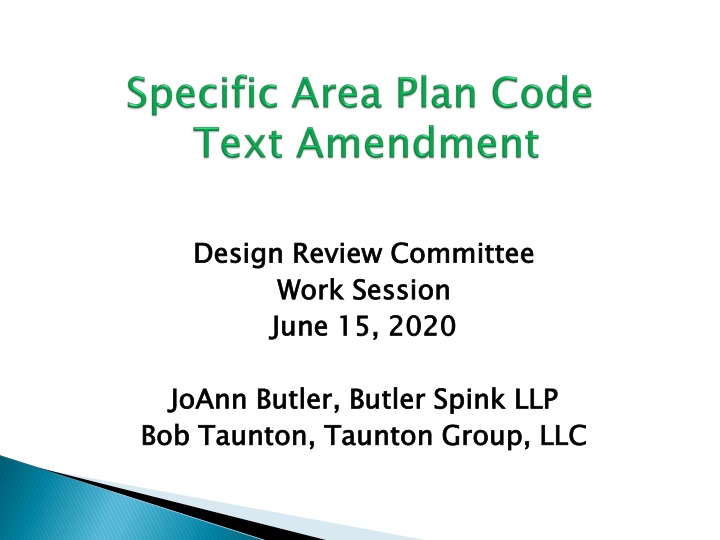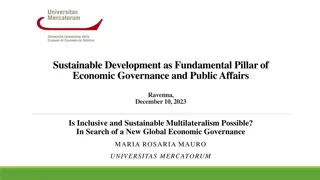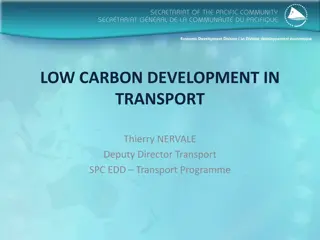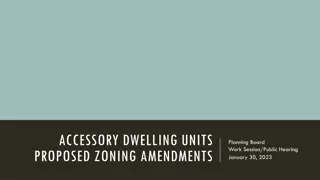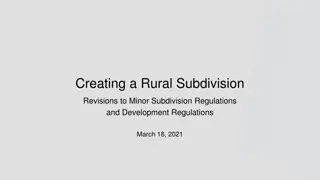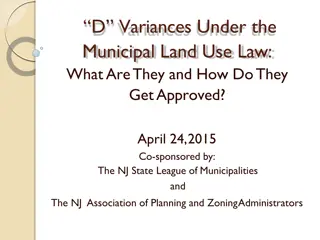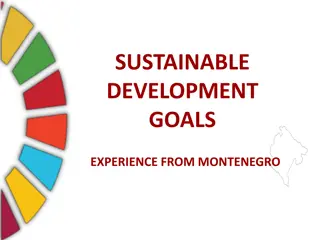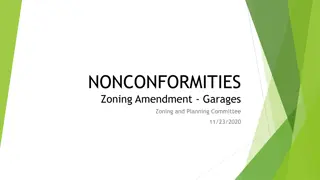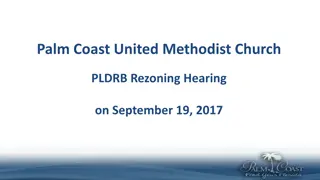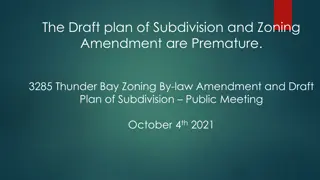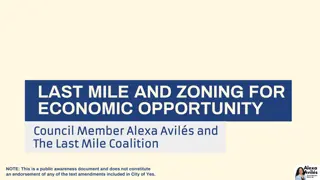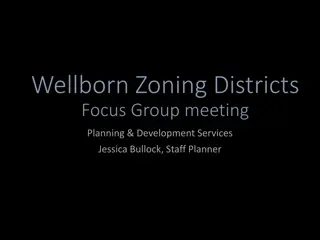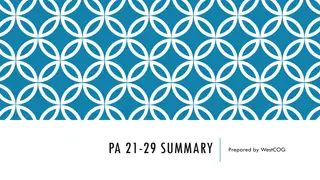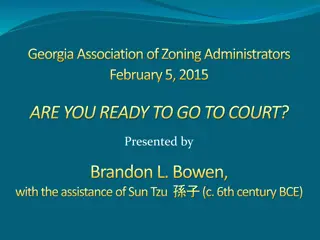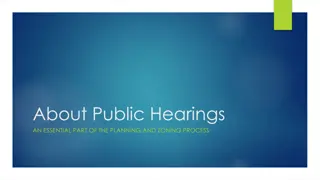Enhancing Zoning Regulations for Sustainable Development
This work session discusses transforming the SAP code, creating master plans for unique properties, and adopting elements of proven ordinances to improve land use designations and regulatory tools. It emphasizes removing limitations, rethinking design approaches, and aligning with phased development strategies for better urban planning.
Download Presentation

Please find below an Image/Link to download the presentation.
The content on the website is provided AS IS for your information and personal use only. It may not be sold, licensed, or shared on other websites without obtaining consent from the author.If you encounter any issues during the download, it is possible that the publisher has removed the file from their server.
You are allowed to download the files provided on this website for personal or commercial use, subject to the condition that they are used lawfully. All files are the property of their respective owners.
The content on the website is provided AS IS for your information and personal use only. It may not be sold, licensed, or shared on other websites without obtaining consent from the author.
E N D
Presentation Transcript
Design Review Committee Work Session June 15, 2020 Design Review Committee Work Session June 15, 2020 JoAnn Butler, Butler Spink LLP Bob Taunton, Taunton Group, LLC JoAnn Butler, Butler Spink LLP Bob Taunton, Taunton Group, LLC
Transforms the SAP code into a robust and flexible planning and regulatory tool Improves implementation of Comp Plan land use designations & policies Facilitates integration of project land uses and design with its context Removes limitations inherent in mixing zoning districts
Creates a master plan and non-transferable set of zoning regulations for unique properties and developments: Existing zoning districts may not achieve the desired results Provides a framework for future development Rethinks the design approach: Removes code compliance as the driver for design Discourages designs meeting mere minimums Ties regulatory provisions to project design
Staff indicates SAP code section is not workable Limited value for developers Few provisions for complex land uses, e.g. TOD Activity Centers Neighborhood Destination Activity Centers Not well aligned with regulating phased development
Boise City Harris Ranch Specific Plan: SPO-1 Barber Valley Specific Plan: SPO-2 Syringa Valley Specific Plan: SPO-3 Ada County Hidden Springs Planned Community Avimor Planned Community Dry Creek Ranch Planned Community City of Eagle Spring Valley (M3 Eagle)
Adopts elements of the proven Boise City Specific Plan Ordinance & Reworks existing language in current code
SAP: Specific Area Plan Code section name Descriptive term for a project application SAPD: Specific Area Plan District Base zone map symbol SAPO: Specific Area Plan Ordinance Implementing ordinance for a specific project adopted as a separate chapter in Development Code
Comprehensive Plan land use designations: TOD Activity Nodes Neighborhood Destination Activity Nodes Future Planning Areas
Master Plan Vision & development principles Physical plans & exhibits Narrative discussing required elements Background studies Regulations Design guidelines Uses, form standards & other regulations Ordinance
Improves implementation of Comp Plan land uses & policies Requires master planning Emphasizes design as the essential element Creates context sensitive development Supports place-making Overcomes traditional Euclidean zoning premised on separation of uses Establishes City, community & developer certainty for phased projects
